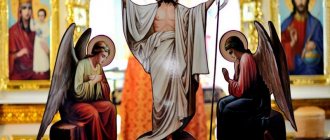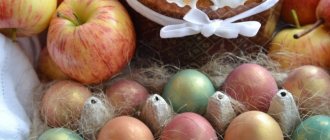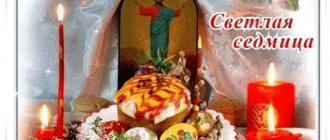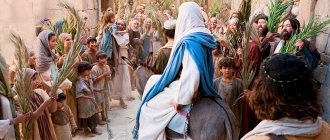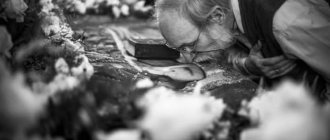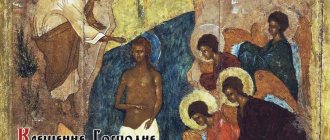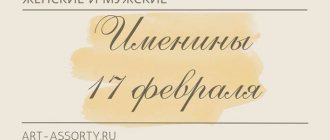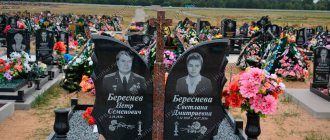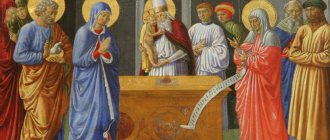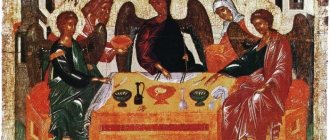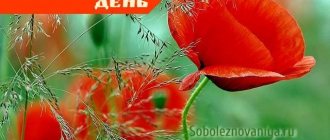Published Apr 18th, 2017
jn Olya
Categories:
- Blog
Bright Week is the week after Easter. Believers continue to rejoice at the great miracle of the resurrection of the Savior, the victory of life over death, honor Christ, and pray fervently. And such prayers said during Bright Week are especially powerful. We will try to tell you what you can and cannot do at this time in our publication. Let’s not ignore folk customs, signs, and daily rituals.
Celebration of Bright Week - the week after Easter (Red Week, Great, Velikodenskaya)
During this joyful time for all Orthodox Christians, festive liturgies are served in churches and religious processions are held every day. The permit for fast food comes into effect. Weddings and funeral services are prohibited. It is on Bright Week that the dead appear before the gates of heaven, where the Almighty grants them remission of sins.
In the week after Easter, worshipers ask the risen Savior for leniency, forgiveness, faith, and health for themselves and their families. You need to start and end your day with a prayer of gratitude. It is better to do this in a calm environment. Prayers and requests made in the first week after Easter are considered the strongest. Fig2
What is possible and what is not?
People are allowed a lot throughout the week. That is why it is called continuous. At this time, it is allowed not to observe traditional fasts on Wednesdays and Fridays. But after Bright Week, fasts are observed again. But before Trinity, you can eat fish on fasting days.
There will be another solid week after the Holy Trinity and before Peter's Lent.
On Easter and throughout the week, you should not be sad, cry, remember the departed, abuse alcohol, swear and be angry, or work hard. Of course, you can go to work, it is not prohibited. But the labor feats are worth it. During this period, you should work in a gentle manner. It is worth spending more time in the company of loved ones and family. Housework should also be kept to a minimum, no matter how easy and enjoyable it may be. During the week, it is not recommended to carry out general cleaning, start repairs or do laundry.
Wednesday Round Dance - Great Compline
The celebration is gaining momentum. By the middle of Bright Week, the Church allows the consumption of wine and fast food. But strong alcohol is still not welcome. In the evening, folk festivities begin - round dances.
In Belarus they are called “hail Wednesday” and “ice day”. People lit candles in churches to prevent damage to crops. In some places, the festive round dances that began today continued every evening until Trinity.
On Bright Wednesday, the Bulgarians performed the Mara Lishanka ritual. A doll was created from scrap materials. She was dressed up in a bride's dress and decorated. The girls gathered, took turns passing the amulet to each other and sang love couplets. Then everyone dispersed. According to other sources, the doll causes rain. For greater effect, you need to bathe her in the river or even let her swim.
What kind of holiday is Radonitsa?
The Slavic folk holiday Radonitsa goes back to the pagan idea of the spring “resurrection” of nature after the long Russian winter. That is why greenery, grass and fresh flowers symbolize this memorial day .
Customs and traditions are determined by the ancient “pre-Christian” history of the holiday.
Parents' Day Radonitsa
- Long before the baptism of Russia, the Slavs remembered their dead ancestors , believing in their afterlife and rejoicing in the new cycle of earthly life.
- The Russian Orthodox Church, although it did not include Radonitsa in the church canon as a day of remembrance of the faithful departed , Orthodoxy approved and supported this folk tradition. Therefore, Radonitsa is a holiday for Orthodox Christians and a memorial day for parents, when cemeteries and churches are visited.
Radonitsa in Russia, Ukraine, Belarus
Where is Radonitsa celebrated? Radonitsa is a folk Christian holiday of the Eastern Slavs , and the tradition of celebrating this parent's day is strong in all East Slavic countries . First of all, in Russia, Ukraine and Belarus.
Radonitsa - Easter of the Dead
Here is an example of how the pagan tradition lives contrary to the church canon. During Holy, Easter or Radonitsa weeks, the Lord, in the representation of the ancestors, opens heaven and hell and releases the souls of the dead so that they can visit their homes and celebrate the Easter of the Dead .
Pagan roots of parent's day
What can you cook for Radonitsa?
On Radonitsa, the dead are commemorated for the first time after Easter week.
- The funeral table menu traditionally includes kolivo or kutya, pancakes, pies, fish snacks, jelly and compote.
- There are no Lenten restrictions on Radonitsa, and Easter eggs , meat dishes and Easter cakes are served.
- Finally, parent's day is celebrated in the spring , when nature itself suggests: let vegetables and fresh herbs .
How to celebrate Radonitsa at home
How to pray for the deceased at home on Radonitsa?
If you were unable to visit the temple, offer prayer for your deceased relatives at home .
- Sing the Easter troparion three times : “Christ is risen from the dead, trampling down death by death, and giving Life to those in the tombs”;
- Offer the prayer “O Lord, rest in peace the souls of your departed servants (list the names given to them at baptism).”
- Pray for a deceased loved one: For the repose of the soul, For the deceased mother, For the deceased father, A widow’s prayer for her deceased husband.
